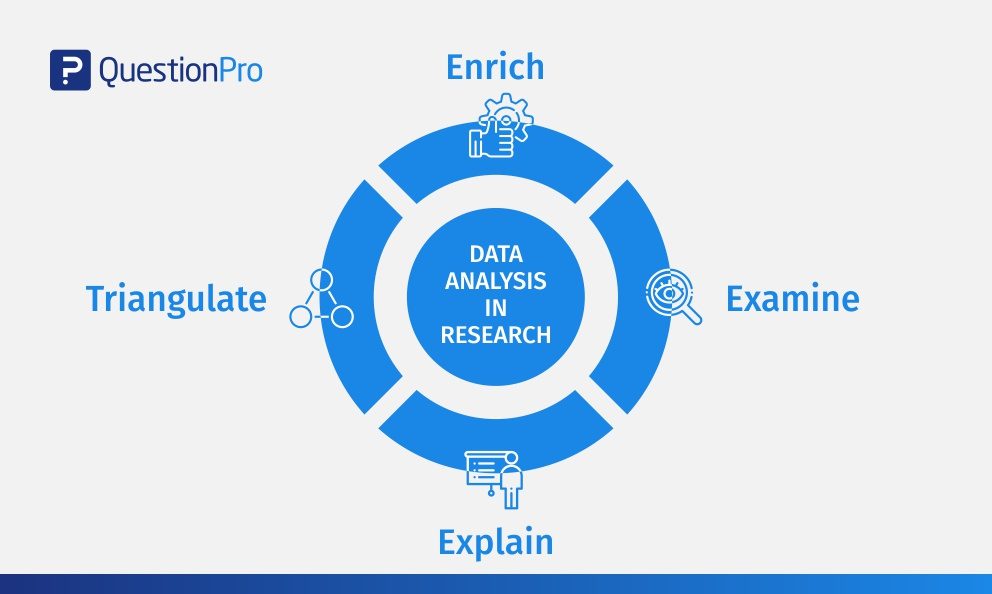
In today’s information-driven world, research and data analysis have emerged as powerful tools to unlock valuable insights and make informed decisions. Whether it is in the realm of science, business, or any other discipline, the ability to gather, analyze, and interpret data is crucial for progress and innovation. Research, often considered the backbone of knowledge, fuels our curiosity, while data analysis provides the lens through which we can understand patterns and trends that might otherwise go unnoticed.
Research, at its core, is a systematic exploration aimed at expanding our understanding of a subject or solving a specific problem. Through careful planning and rigorous execution, researchers embark on a journey of discovery, striving to shed light on unanswered questions and contribute to the body of knowledge. By leveraging various methodologies, such as qualitative and quantitative approaches, researchers can gather a wealth of evidence that can be further examined and interpreted.
Data analysis, on the other hand, is the art of uncovering patterns, relationships, and insights from raw information. In this age of vast data availability, it has become increasingly critical to be able to effectively extract meaning from the overwhelming abundance of data. It is through data analysis that we can transform seemingly unrelated facts and figures into actionable knowledge, enabling us to make better decisions and formulate more effective strategies.
Together, research and data analysis provide a powerful synergy, offering a systematic and evidence-based approach to unraveling the complexities of our world. They allow us to explore new frontiers, challenge existing assumptions, and drive innovation in a wide range of fields. From healthcare to marketing, from social sciences to technology development, the power of numbers is becoming increasingly evident, revolutionizing the way we approach problems and unlocking new opportunities.
So, join us as we delve into the fascinating world of research and data analysis, exploring the methodologies, tools, and insights that drive progress and make a profound impact on various aspects of our lives. Together, we will embark on a journey that will not only enhance our understanding but also empower us to shape a better future through the power of numbers.
Importance of Research
Research plays a paramount role in uncovering valuable insights and expanding our knowledge. It helps us gather information, analyze data, and draw meaningful conclusions. Through research, we can explore new frontiers, challenge existing beliefs, and make evidence-based decisions. In today’s data-driven world, research has become an indispensable tool for understanding the complexities of our society and making informed choices.
Research allows us to delve into various disciplines and explore different aspects of life. Whether it’s in the field of science, social sciences, or humanities, research widens our perspectives and helps us understand the world in a more nuanced way. It enables us to investigate phenomena, identify patterns, and uncover the underlying causes behind them. Without research, our understanding of the world would be limited, and we would not be able to make significant advancements in any field.
Data analysis, as an integral part of research, enables us to make sense of the vast amount of information collected during the research process. By employing statistical techniques, we can identify trends, correlations, and outliers within the data. Data analysis helps us quantify observations, validate hypotheses, and generate meaningful insights. It brings structure and clarity to the research findings, allowing us to interpret and communicate the results effectively.
Furthermore, research and data analysis provide a solid foundation for making informed decisions. In fields such as business, public policy, and healthcare, data-driven decision-making has become crucial. Research helps us gather relevant information and evaluate the potential outcomes of different choices. By analyzing data, we can assess risks, identify opportunities, and optimize our strategies. In a rapidly changing world, research equips us with the necessary tools to adapt and make well-informed decisions that can have a significant impact.
In conclusion, research and data analysis are of utmost importance in our quest for knowledge and understanding. They enable us to explore new territories, uncover valuable insights, and make informed decisions. As we continue to embrace a data-driven approach, the power of research will undeniably shape our future, contributing to advancements in various fields and helping us overcome complex challenges.
2. Techniques in Data Analysis
In the field of data analysis, various techniques are employed to unravel insights from research and raw data. These techniques play a crucial role in transforming complex data sets into meaningful and actionable information. By employing the right tools and methodologies, analysts can extract valuable knowledge that can drive informed decision-making. Let’s explore some of the key techniques used in data analysis.
-
Descriptive Analysis: Descriptive analysis focuses on summarizing and presenting raw data in a meaningful way. This technique involves calculating measures of central tendency, such as mean, median, and mode, to provide a snapshot of the data’s characteristics. Visual representations like charts, graphs, and histograms are also used to present the data visually and facilitate easier interpretation.
-
Inferential Analysis: Inferential analysis is concerned with making inferences and drawing conclusions based on a sample of data. This technique utilizes statistical methods to estimate population parameters and test hypotheses. By analyzing a subset of data, analysts can make predictions and generalizations about the entire population, making this technique valuable in research studies and surveys.
-
Predictive Analysis: Predictive analysis involves using historical data to forecast future outcomes or trends. This technique combines statistical models, machine learning algorithms, and data mining techniques to identify patterns and relationships within the data. By understanding these patterns, analysts can make accurate predictions and uncover hidden insights that can guide future decision-making processes.
These techniques in data analysis form the foundation for deriving insights from research and raw data. Whether it’s summarizing data, making inferences, or predicting future trends, the power of numbers combined with the right analytical methods enables us to unlock the valuable information hidden within the data. By leveraging these techniques effectively, organizations can gain a competitive edge and make data-driven decisions that lead to success.
https://www.capstone-dissertationwritingservices.com/Research-paper-help-451.html
3. Extracting Insights from Data
In the field of research and data analysis, one of the most crucial steps involves extracting insights from the gathered data. This process plays a vital role in unraveling hidden patterns, discovering trends, and making informed decisions. By utilizing various tools and techniques, researchers can transform raw data into meaningful information.
The first step in extracting insights is to clean and preprocess the data. This involves identifying and handling missing values, removing outliers, and standardizing the data format. By ensuring the data is clean and consistent, researchers can eliminate potential biases or errors that may impact the accuracy of their findings.
Once the data is cleaned, researchers can apply statistical analysis techniques to explore relationships and patterns within the dataset. These techniques include measures of central tendency, dispersion, correlation, and regression analysis, among others. By using these statistical methods, researchers can uncover meaningful insights and quantify the significance of their findings.
Furthermore, advanced data analysis techniques such as machine learning and data mining can provide even deeper insights. These techniques utilize algorithms to identify complex patterns and predict future trends. By leveraging the power of artificial intelligence and pattern recognition, researchers can gain valuable insights that would otherwise remain hidden.
In conclusion, extracting insights from data is a fundamental step in the research and data analysis process. By cleaning and preprocessing the data, applying statistical analysis techniques, and utilizing advanced data analysis methods, researchers can unveil valuable insights that can drive decision-making and contribute to the advancement of various fields. Combining the power of numbers with rigorous analysis can unlock a world of knowledge and understanding.
